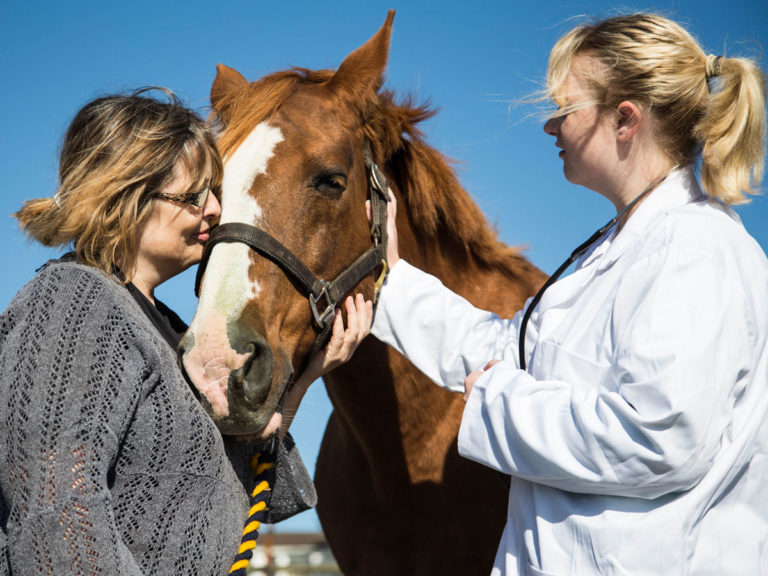
The bisphosphonate clodronate (OsphoR) is labeled for use in the treatment of navicular syndrome in horses over age 4. Yet, it is still used off-label, especially in racehorses and sport horses, leading to concern about its effects on inhibiting osteoclast activity and bone resorption that might then affect normal bone healing for microfracture repair.
A study looked at blood and urine concentrations of clodronate in horses exercising on the treadmill, and also evaluated bone remodeling biomarkers following treatment. [Knych HK, Finno CJ, Katzman S, et al. Clodronate detection and effects on markers of bone resorption are prolonged following a single administration to horses. Equine Veterinary Journal 2022; doi: 10.1111/evj.13866]
Seven healthy Thoroughbred horses aged 4-7 years were administered 1.8 mg/kg clodronate IM, and four were given the same volume of saline as controls. This was the first and only administration of the medication in the study animals. No other medications were given through the six-month study period other than anthelmintic treatment. The horses were exercised on a high-speed treadmill two days a week and on an Equineciser three days a week. Blood and urine were analyzed prior to treatment, repeatedly through the first 72 hours following treatment, and then weekly until day 182. Urine was collected prior to treatment, four hours following, and on days 1 through 7 following treatment. Biomarkers of bone resorption were measured weekly.
The results:
- Clodronate was detected in serum from 7 – 175 days following treatment.
- Clodronate was in highest concentration in urine at 4 hours after administration and detectable up to 21 days post administration. Clodronate was detected for a longer time in urine compared to blood.
- One biomarker of bone resorption (CTX-1) was elevated starting at 7 days following treatment and continued through the sample collection period in both treated and saline controls. It is not clear if this biomarker is reliable for osteoclastic activity due to a large degree of biological variability associated with feed and time of collection.
- The other biomarker (TRAcP5B) lowered by day 35 and throughout sample collection of clodronate-treated horses whereas it lacked any change in serum concentrations in the saline control group. This biomarker is considered more reliable and less affected by external factors than CTX-1. The prolonged decrease in TRAcP5B compared to pre-treatment “suggests that clodronate does influence osteoclast activity following label dose administration.”
Clodronate is reported to have analgesic effects, possibly due to inhibition of pain associated with active bone resorption. That suggests that treatment at the labeled dose may prolong analgesia of bone lesions.
The drug has a high affinity to bind to the hydroxyapatite matrix to accumulate as a long-term reservoir of clodronate in bone. Over time, bisphosphonate is released from bone for months to years depending on bone turnover rates. High-speed treadmill exercise is associated with an increased rate of bone turnover compared to horses that are not exercised. As the drug is released from bone, particularly in exercised horses, it is likely to exceed the limit of detection in blood samples.
The authors note that liberation of bisphosphonate from bone doesn’t necessarily mean it is eliminated from the body. It can reattach to bone surfaces to prolong residence time in the body. In some cases, particularly when there is limited bone turnover and despite the fact that the drug is resident in the skeleton, it may be non-detectable in a blood sample. The authors stress, “Clodronate should be used with extreme caution in racehorses or other sport horses, where the presence of clodronate in a regulatory sample constitutes a rule violation.”








